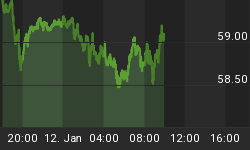This week's Chart of the Week video looks at yields on the 10 year Treasury Bond. So let's get technical.
Our basic set up is shown. The red and black dots are key pivot points or the best areas of buying and selling or support and resistance. And this is your 40 week moving average.
Rising Treasury yields and falling stock prices has many a market commentator in a tizzy. As many an analyst has surmised, spiking Treasury yields are not good for stocks especially at this late stage in the economic cycle. If market commentators are in a tizzy, they tend to look in one place for a solution: the Federal Reserve. The Fed can fix those falling asset prices, and all these wise men and women have to do is to expand the scope of asset purchases, which is the only tool they have their disposal. Listening to these commentators over the past week as the equity market sold off on increasing volume, you get a sense of pleading that something must done - after all, the SP500 is off its highs by about 3%.
But if you are an equity bull let's hope you don't get what you wish for because the data doesn't support the notion that the Fed is bringing down interest rates. See this weekly chart of the yield on the 10 year Treasury bond.
Since QE3 was hinted at in the summer of 2012, yields have done nothing but go higher. QE3 was hinted at here at this point when Wall Street Journal reporter, Jon Hilsenrath, leaked the Fed's intentions to expand its asset purchase program.
Yields spiked higher yet again in January, 2013 and this coincided with QE4. This also coincided with our fundamental bond model turning negative and it has remained negative ever since. From a technical perspective, a close above 3 key pivot points is a very bullish sign of a secular trend change in an asset class.
However, it wasn't until yields closed above the key pivot point at a yield of 2.092% that really saw yields explode higher. This was the low key pivot point from the 2008 financial crisis, and it has always been an important bogey in my mind. I have been stating this since May, 2013.
And yields spiked again higher at this point when Ben Bernanke confirmed the Fed's intentions to not pull the monetary punchbowl out from under the market for a very long time.
Once again, investors should be careful what they wish for. When Ben speaks, interest rates rise and stocks seem to have lost their mojo.
But as discussed in a video on June 30, 2013, investors should really fear rising interest rates particularly if yields spike above the 2.619% level. We are here and it is my expectation that yields on the 10 year Treasury bond will eventually get to the 3.4% level.
In summary, Treasury bonds are broken - both fundamentally and technically. We believe this is a secular trend change that has been in place since May, 2013. Higher Treasury yields are expected, and this should not be equity friendly. Increasing monetary liquidity, which is the only lever the Fed can pull, will not help. In fact, it has is having a counter productive effect.
TacticalBeta offers a 21 day FREE TRIAL (no credit card required): 1 CLICK SIGN UP
















